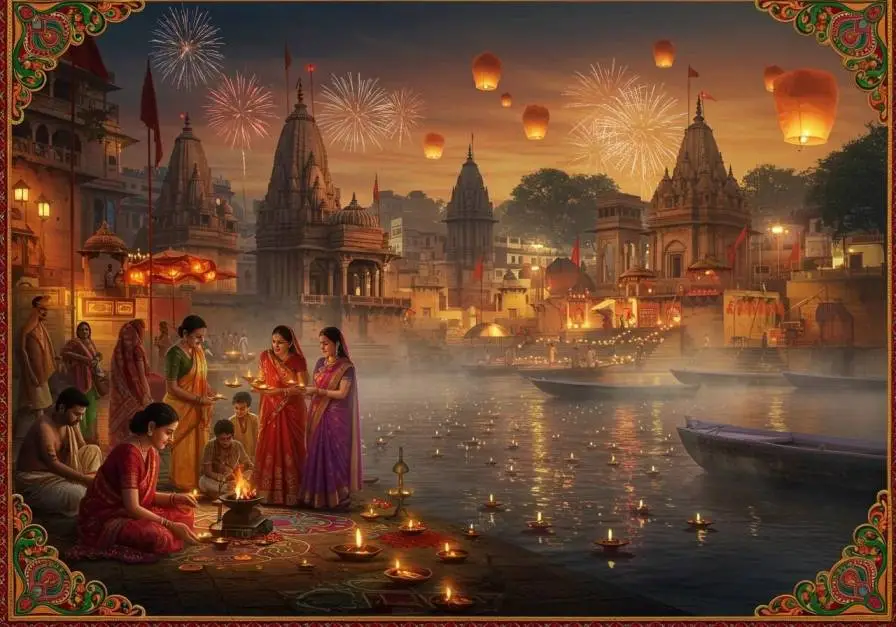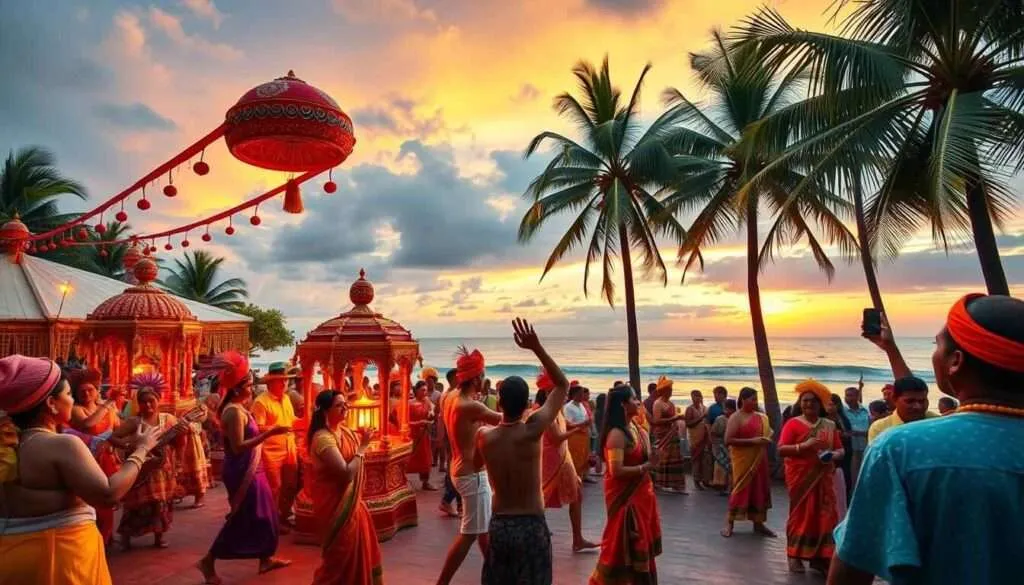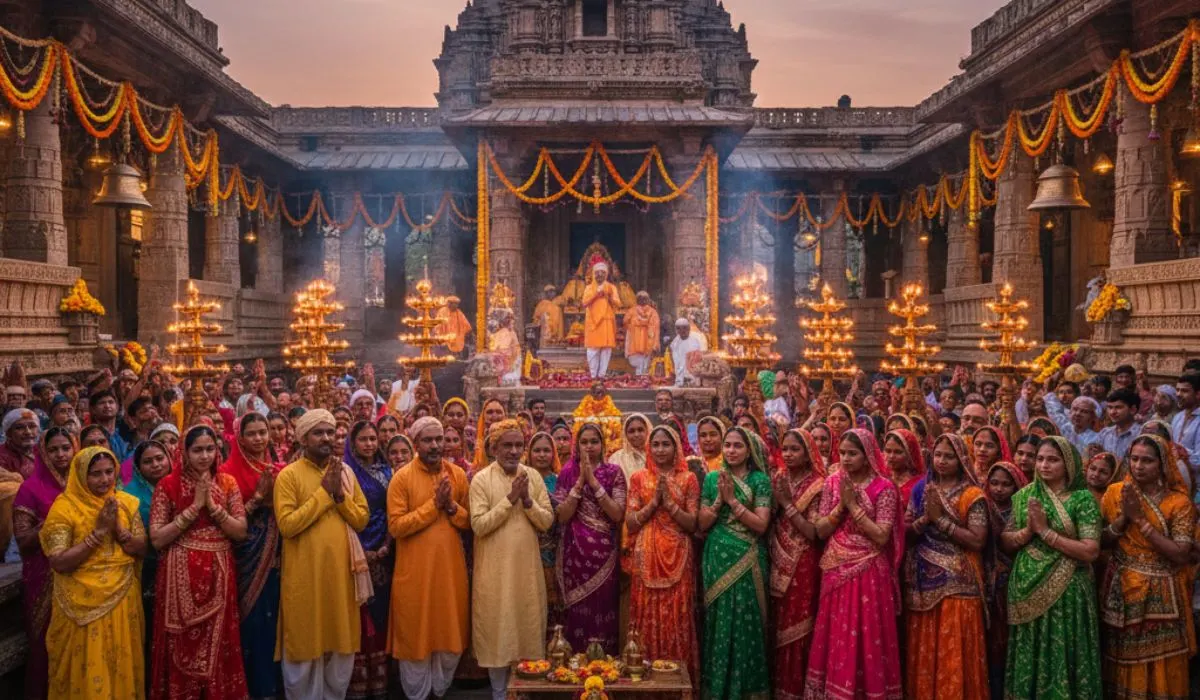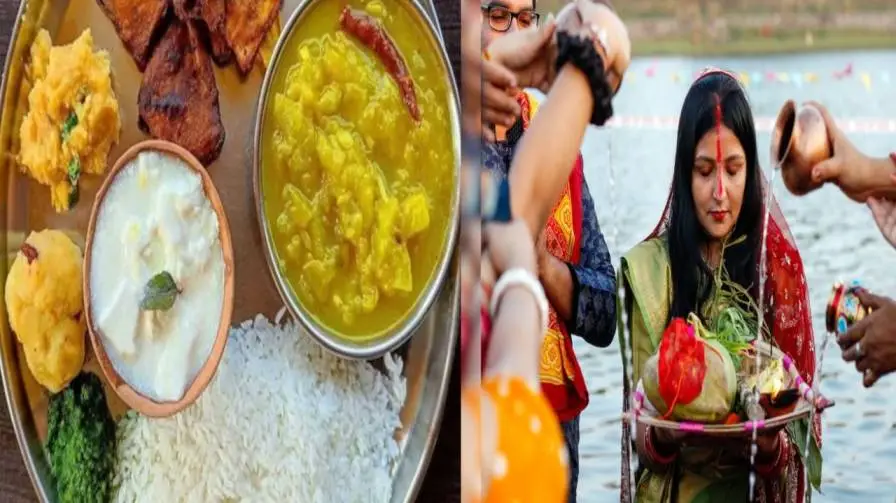Uttar Pradesh, often called the heartland of India, is rich in culture and traditions. People know this state for its lively celebrations and ceremonies. They provide a fascinating glimpse into its history, traditions, and strong beliefs. From old sanctuaries to busy cities, Uttar Pradesh shines during these celebrations. It shows a vibrant mix of colors, music, and dedication.
Every year, a magical transformation is seen in Uttar Pradesh (UP). As Diwali approaches, ancient temples across the state are lit up with lamps, lights, and devotion. The sacred architecture is bathed in a glow. This article looks at how traditional temples glow during Diwali. It highlights recent trends, important sites, and their spiritual meaning.
Diwali and Temple Illumination in UP
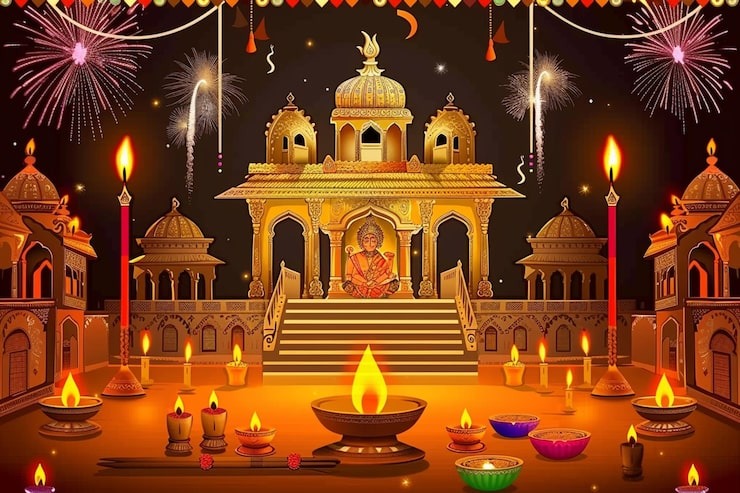
People celebrate Diwali as the return of Lord Rama to Ayodhya after exile. In Uttar Pradesh, that legend resonates with great significance. They not only clean and decorate the temples — they prepare them to shine. Many temple complexes use thousands of diyas (oil lamps), LED strings, and spotlights.
Read Also: Guwahati Streets Shine Bright With Diwali Diyas
Government and local temple trusts are now carrying out large-scale lighting projects. Every year, the city of Ayodhya stages the Deepotsav festival to mark Diwali in a grand way. This year, the city is adding Ramayana-inspired murals and art. Also, special lights will enhance the temple areas.
The aim is to draw pilgrims and tourists and to present the temple in a new aesthetic glow. Temples in Varanasi also join the spectacle. On Dev Deepawali, celebrated 15 days after Diwali, all ghats and many temples glow with countless diyas. This creates a beautiful and sacred atmosphere.
This trend has made Uttar Pradesh one of India’s most luminous Diwali destinations.
Key Temples and Their Diwali Glow
Below are some temples in Uttar Pradesh that are especially famous for their Diwali lighting and spiritual aura.
1. Shri Ram Janmabhoomi Temple, Ayodhya
This temple is central to Diwali celebrations in UP. The newly unveiled first floor and corridors feature intricate carvings and detailed stonework. They decorate the entire temple complex with lights and murals each Diwali. Around Diwali, people place millions of diyas on the temple steps, on ghats, and across the city. Each year, someone attempts a record count of lamps.
The Deepotsav festival in Ayodhya draws large crowds. This year, local art inspired by the Ramayana decorates walls, flyovers, and public spaces.
2. Kashi Vishwanath and Temples Along Ganga, Varanasi
Varanasi’s temples shine during Diwali and Dev Deepawali. Lamps are lit on ghats, in temple courtyards, and around sanctums. The glow on the water adds a divine reflection. Pilgrims visit Kashi Vishwanath Temple, take part in Ganga Aarti, and see the spectacle of lights.
On Dev Deepawali, people decorate the 84 ghats with diyas, and they provide special lighting for the temples along the river. The visual effect is one of the most photographed in India during the festival.
3. Temples in Mathura & Vrindavan
These temples are linked to Lord Krishna. People celebrate Diwali here with great joy. Temples such as Banke Bihari and Krishna Janmabhoomi shine bright with lights. They feature floral rangoli and festive offerings, creating a joyful atmosphere. The festival of Govardhan Puja is also observed with grand rituals here.
4. Temples in Prayagraj (Allahabad)
Temples near the Sangam (meeting of rivers) are lit, and lamps are placed along the riverbanks. People perform ritual baths and prayers. The ancient Hanuman Mandir (Lete Hanuman Ji) in Prayagraj is another notable site. It dates back centuries and is revered by devotees.
5. Lesser-Known Temples & Local Sites
The Siddhpeeth Shakumbhari Devi Temple in Saharanpur is ancient and draws many devotees during Diwali. The Maa Kaali & Bhagwan Shankar Temple in Bisauri, Jaunpur district, glows for Diwali.
You Must Also Like: Ahmedabad Markets Glow with Festive Diwali Lights
The Gomateshwar Mahadev Temple in Kerakat is an ancient site. Restorers have added beautiful decorations to it. These temples might not match the size of those in Ayodhya or Varanasi. Still, they glow with devotion and local pride during Diwali.
Trends and Innovations In Temple Lighting
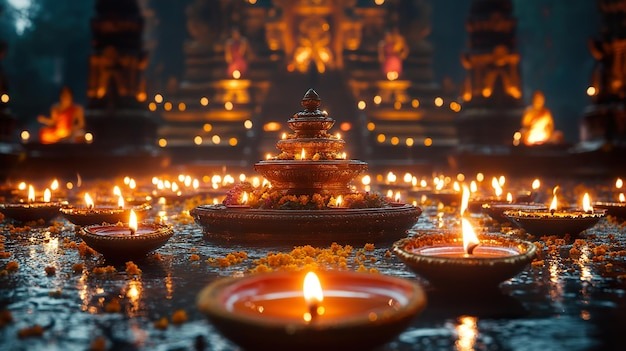
- Temples have recently used new methods to improve the Diwali experience for visitors.
- LED lighting and smart bulbs are being used to reduce energy use while increasing brightness.
- Cities like Ayodhya are using laser shows and drone projections on temple walls and facades during events.
- Murals and street art inspired by mythological stories are being painted around temple zones to add visual narrative.
Virtual or digital diya lighting is being made possible via apps. Devotees can light a virtual diya for Lord Ram on a digital platform called “Ek Diya Ram Ke Naam” in Ayodhya.
The authorities have allocated beautification funding for temple art and infrastructure. The UP government approved 1 crore for beautifying a temple in one instance. Such innovations bring tradition and modernity together. They allow more visitors to engage, enhance safety, and reduce the burden of manual lamp lighting.
Spiritual Meaning & Cultural Impact
In each temple, the glow of lamps is more than decoration. It is symbolic of light over darkness, knowledge over ignorance, and hope over fear. For devotees, the temple is a place of refuge. On Diwali, the lighting is a collective act of devotion.
The festival also boosts local economies. Temple towns see more tourism, increased sales of lamps, flowers, sweets, and handicrafts. Artisans in rural areas are doing well. Demand is rising for terracotta diyas, rangoli supplies, and temple decorations.
Additionally, the heritage architecture receives renewed attention. Old stone carvings, pillars, domes, and murals are cleaned and repaired for Diwali. This way, they shine beautifully under the lights. Many temples that had deteriorated are being restored so they can shine again. The funding from governments and trusts is being directed to such restoration.
Finally, the illuminated temples become “Instagram landmarks.” Social media draws more visitors. People share the glowing photos, and interest in pilgrimage grows. This cycle helps preserve heritage and ensures traditions stay alive for younger generations.
Tips for Visitors & Pilgrim
If you plan to see the Uttar Pradesh temples shine on Diwali, here are some practical tips:
- Book early. Hotels and guesthouses fill up fast in temple towns during Diwali.
- Visit at dusk. The best time for seeing the temple lights is just after sunset and during “magic hour.”
- Stay close to temples. Walking distance is better because the streets may be crowded.
- Carry a flashlight or phone torch. Some paths may be dim, especially in rural temple areas.
- Respect decorum. Use quiet voices in temple grounds; avoid flash photography during rituals.
- Use public transport or shared rides. Parking is limited, and traffic is heavy.
- Check temple schedules. Some temples may extend their opening hours or have special events.
- Dress modestly. As you will visit religious places, covering your shoulders and legs is respectful.
- Capture safely. Use a stable hand or a tripod for night photography to get clear images of lights.
Explore beyond light. Attend evening prayers, aart, and cultural programs to feel the spiritual energy.
Conclusion
On Diwali, the traditional temples of Uttar Pradesh do more than exist—they shine. In cities and villages, the festival of lights shines bright. Grand temples and humble shrines celebrate this day with devotion and art. Temples are decorated, restored, and lit to tell stories of faith and divine glory.
From the bright glow of Ayodhya’s Ram Janmabhoomi to the sacred rivers of Varanasi, traditions are changing. Small-town temples now embrace new ideas, like drone projections and apps. Yet the message remains unchanged: light conquers darkness. May this Diwali lead more people to feel the bright spirituality of Uttar Pradesh’s temples.



